Get PeakVisor App
Sign In
Search by GPS coordinates
- Latitude
- ° ' ''
- Longitude
- ° ' ''
- Units of Length

Yes
Cancel
Share ×

Scan the QR code and open PeakVisor on your phone
❤ Wishlist ×
Choose
Delete
Biogradska Gora National Park protects numerous wild rivers and deep forests in Montenegro. It lies in the northeastern part of the country, on the Bjelasica massif, and is the smallest national park here. There are 29 named mountains in Biogradska Gora National Park. The highest and most prominent mountain is Zekova Glava (2,122 m/ 6,961 ft).
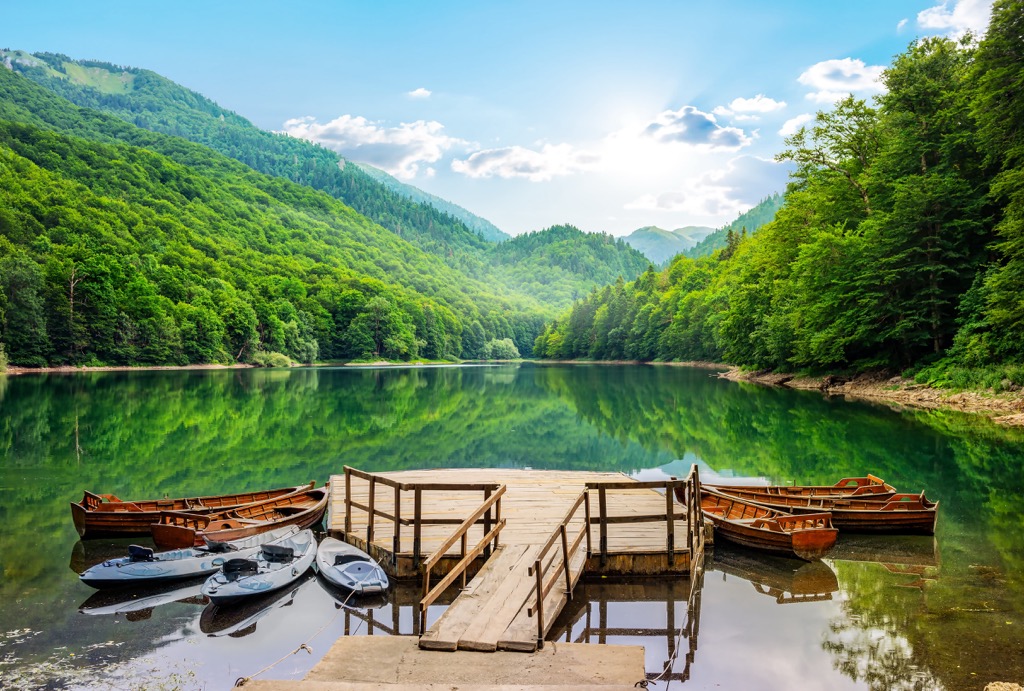
One of the most beautiful places you could visit in Montenegro is Biogradska Gora National Park since it offers one of the most imposing forests in Southeastern Europe. It lies on Bjelasica mountain, in the northeastern part of Montenegro, with its municipality called Kolašin. Mojkovac and Berane towns surround it, and it lies positioned between the Rivers Tara and Lim.
Biogradska Gora National Park lies in the northeast of Montenegro, surrounding Biograd Lake as its center. Locals announced it a protected area in 1952. Today, it covers 56 sq. km (34 mi), and together with the buffer zone, there is an overall protected area of 194 sq. km (120 sq. mi).
The national park covers the central part of the Bjelasica mountain. 4 municipalities lie in this area: Kolašin, Mojkovac, Berane, and Andrijevica. Over 1,600 ha (3,953 ar) is rainforest. Tara River is the lowest point at 832 m (2,719 ft), and Zekova Glava is the highest point at 2,122 m (6,961 ft).
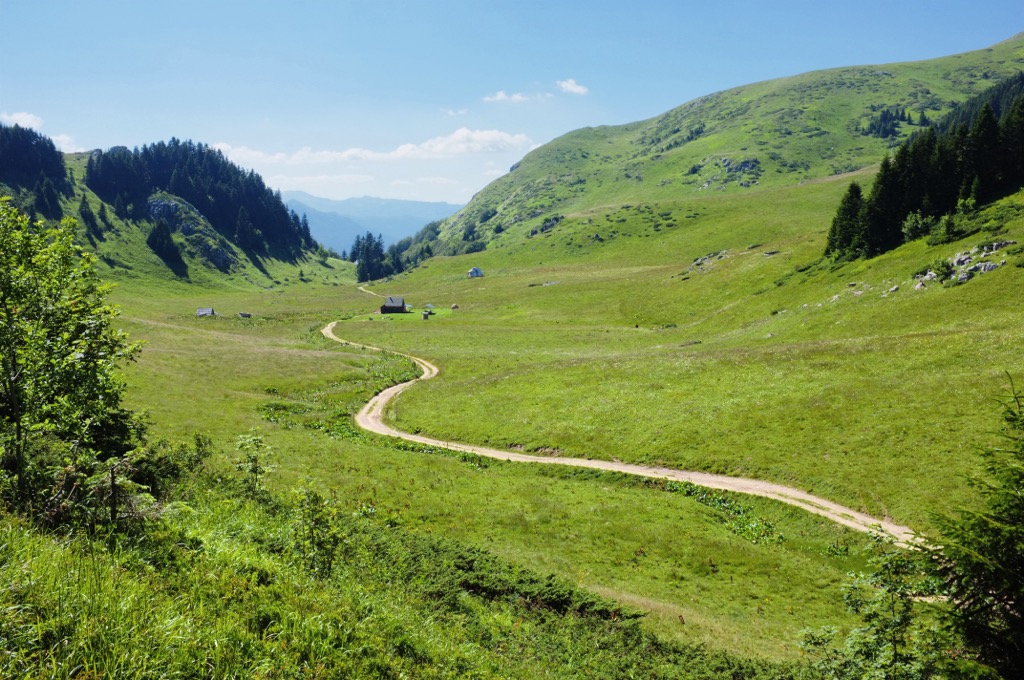
The boundary of the park starts from the Tara River and continues over to the Kozija Strana before moving up to Crna Glava and finally descending towards Lumerski Potok. Biogradska Gora National Park has 56 sq. km (34 sq. mi) of phenomenal natural features, such as the six wonderful glacial lakes, green pastures, and swift, clear streams.
The National Park is unique because it holds one of the few remaining large virgin primeval forests in Europe. You can still see the old-growth forest here, which was preserved for over 400 years. It is a UNESCO World Heritage Site.
This pristine forest reserve teems with ancient trees and rare plant life. This forest area has been set aside since 1878, when King Nikola declared a "ban" on logging in. Biogradska Gora will have you amazed with its uneven mountain terrain and greenery. The entrance is less than 20 km from Mojkovac to Kolašin.
Bjelasica is the greenest Montenegrin mountain in summer and offers great views and lush forests. It represents one of the oldest protected areas in the world and known locally as "Knjažev Zabran" or "Branik."
Montenegrin King Nikola banned logging here. This is why the trees in the forest surrounding Lake Biograd are estimated to be over 400 years old. Some reach heights of 40 m (131 ft) and make up one of three famous European rainforests.
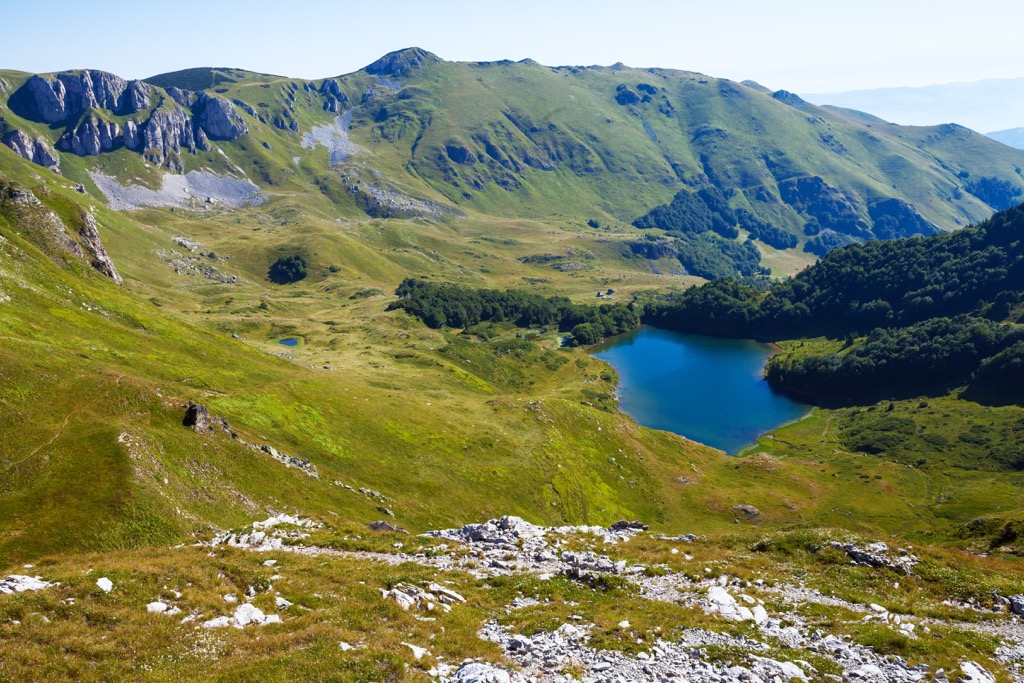
There are six glacial lakes with a maximal altitude of 1,820 m (5,971 ft), and the most accessible one is Biogradsko Lake. Most tourists stop here and enjoy the cold water and pristine nature. Above it lie Ursulovačko, Pešica, Šiško, Mali Šiško, and Ševarina Lakes.
Swift streams cut through the scenery of Biogradska Gora, green pastures and clear lakes reflecting the peaks and forests. This park is renowned for its unique geomorphological look and, therefore, an attractive opportunity for scientific study. The nearest town center to the national park lies in the town of Kolašin.
There's a mixture of natural beauty and rich cultural history, including religious monuments, museums, and preserved historical sites. The traditional architecture that you will see among the pastures and villages on the Bjelasica range is also a big tourist attraction.
We know Biogradska Gora for its incredible lakes, including the largest mountain lake in Montenegro that reaches depths of up to 12 m (39 ft) and a surface area of 871 m (2,857 ft) long and 261 m (85g ft) wide. Of course, it is Biograd Lake. Biograd River and periodical streams coming down from the surrounding mountains fill it throughout the year, which makes it one of the most beautiful glacial lakes in this region.
Biograd Lake's surface reflects the blue-green colors of the forest. Thousands of people visit Biogradska Gora, where they enjoy this beautiful scenery. The largest part of the Park lies in the valley of Biogradska River, in Jezerštica.
NP Biogradska Gora lies surrounded by five cities, Andrijevica, Berane, Bijelo Polje, Kolašin and Mojkovac. They are all connected by the regional highway. Local towns such as Bijelo Polje, Kolašin, and Mojkovac are accessible from Belgrade by train. Podgorica, the capital of Montenegro, is 85 km (52 mi) away.
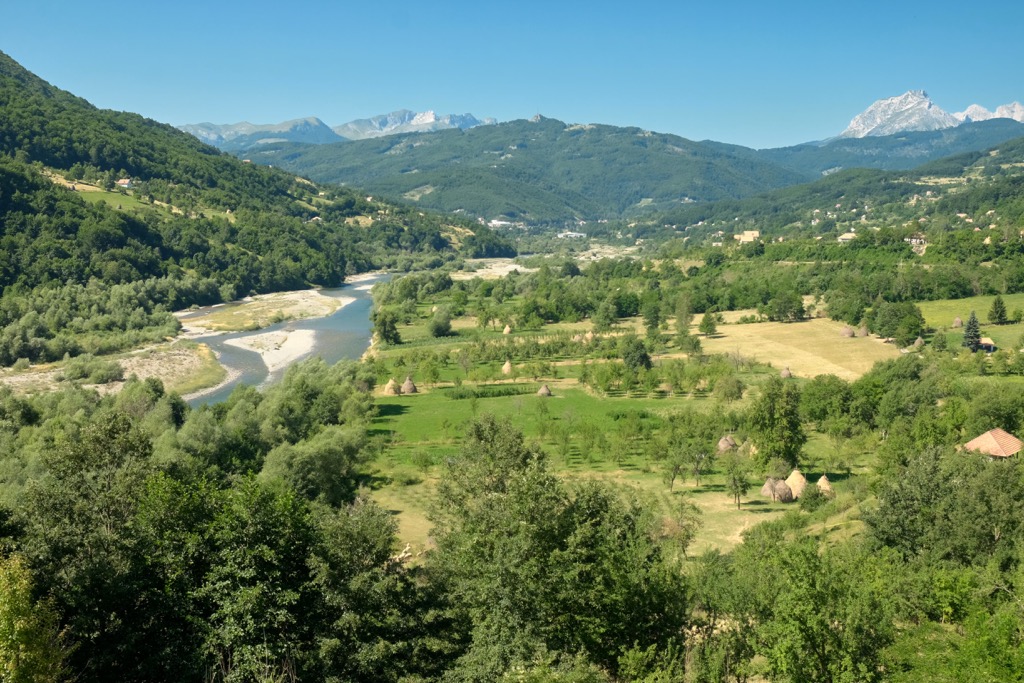
The vast majority of Biogradska Gora National Park consists of sprawling forests and open meadows. There are also a few lakes scattered about, most notably Biogradsko Lake in its center.
When visiting, we'll take in some of the most beautiful scenes as we travel through a range of twisting and hilly terrain featuring different and ever-changing green environments. The park, intersected by streams, and decorated with beautiful lakes, adorned with centuries-old forests and juicy meadows, is a magnificent gift from nature.
The local geomorphological forms of river erosion and denudation, the forms of glacier activity (cirques, drumlins, and terminal moraines), accumulation, and karst activity are all visible here. This is important evidence of the history of the Tertiary period, both living and non-living. Most of the mountain's terrain is of magmatic and sedimentary origin.
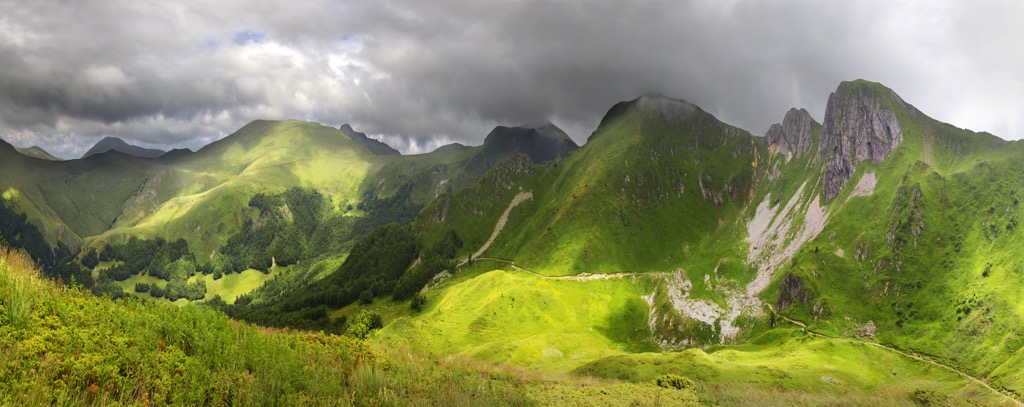
The central part of the Bjelasica massif holds the highest peaks of the park (Zekova Glava (2,122 m/ 6,961 ft), Troglava (2,072 m/ 6,797 ft), and Lazarička Glava (2,044 m/ 6,706 ft)), with a multitude of signs of past glacier activity and an extensive range of glacier variation.
One of the major distinguishing features of Bjelasica is the water divide or two different watersheds, which separates two different hydrological systems. To the west lie springs that bring water to the Tara River, and to the east side, there's a terrain that brings water to River Lim.
Water is not scarce here. There are 6 glacial lakes - Biogradsko, Ursulovačko, Pešica, Šiško, Mali Šiško, and Ševarina Lakes. They all lie at various elevations above sea level. The deep glacial Lake Biograd (1,094 m/3,589 ft) is the largest on Bjelasica Mountain, with a maximum depth of 12 m (39 ft).
The highest peaks in the park include:
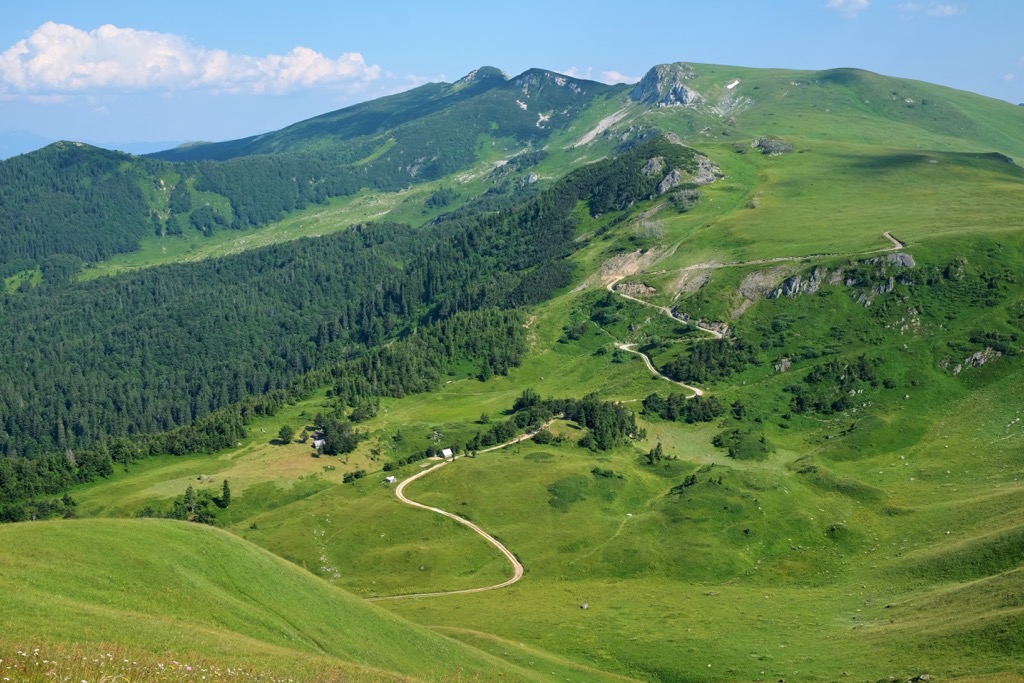
Locals know Biogradska Gora National Park for the diverse flora and fauna that lives here. With many different species that live in one of the most beautiful forests of Europe, this National Park is also home to many outstanding examples of nature's work.
Biogradska Gora National Park lies between two rivers, Tara and Lim, and contains forests, meadows, water bodies, mountain heaths, and glacial lakes. This sounds perfect for building biodiversity. Also, Biogradska Gora National Park has a moderate continental, Adriatic Mediterranean, sub-mountain, and mountain climate.
Biogradska Gora's heart lies in Biogradsko Lake, the largest of the several glacial lakes that decorate this natural beauty. Biogradska Gora National Park, like the Perućica rainforest in Bosnia and Herzegovina and the Bjelowska rainforest in Poland, represents one of the last rainforests in Europe.
Biogradska Gora National Park is rich in wonderful evergreen and deciduous forests, meadows, and pastures. Thanks to authorities, the natural habitats here remained untouched. There are more than 2,000 plant species and 86 different types of trees, which one can find in 9 different habitats.
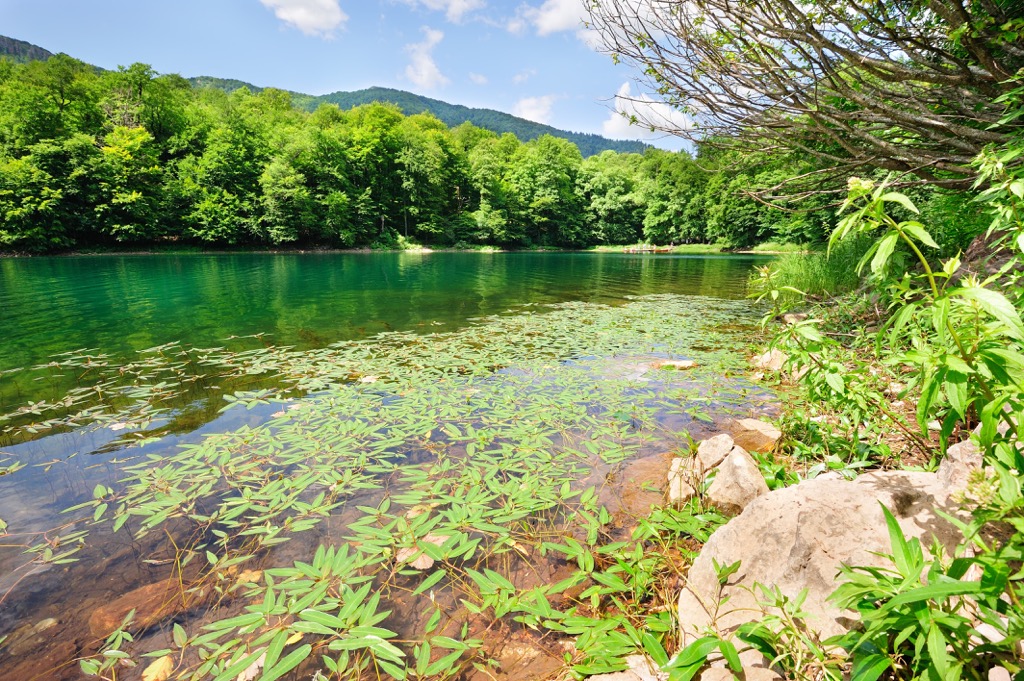
20% of tree varieties have been classified as endemic to the Balkan Peninsula. One of the most common forests in Biogradska Gora National Park comprises trees such as spruce, beech, and fir. Still, there are between 90 types of trees in total inside the part.
The animal life is also diverse, with 200 species of birds, 80 species of butterflies, 350 types of insects, and typical mammals - fox, bear, wolf, deer, and others. One of the most well-known inhabitants of forests is the fox. But there are many other animals such as deer and boar that inhabit these forests. Some bird species live here, too, like cuckoos and woodpeckers. In the Tara River and the local glacial lakes' ecosystem, there's a variety of brown trout fish.
The alpine ecosystem lies in the high mountains with many animals such as chamois, eagles, and falcons. The wildlife of the relict deciduous ecosystem consists of creatures such as the white-necked flycatcher, Lilford’s colorful woodpecker, and Mediterranean gazebo. Down nut and other types of trees are also present at the peaks.
Generally, the mountain peaks are covered in shrub pine. The dark pines on one mountain summit are what named most of the park’s peaks. Galica and Crna Glava, also called The Black Mountain and The Black Head, respectively, reference their dominant dark colors.
9 habitats visible here are in the EMERALD and NATURA 2000 Projects. Large areas of Macedonian pine forest (Pinetum peucis) also host beech and spruce trees. Macedonian pine habitat forests are of utmost importance because this tree is a Balkan relict.
The national park is home to one of the last European virgin forests. A strict protection system has been put in place to prevent any damage. We are talking about the dense Biogradska Gora rainforest, which occupies a space of 1,600 ha (3,953 ar) and stands out as one of Europe's last rainforests. In the heart of the rainforest is Lake Biograd, the most famous of the series of glacial lakes in the national park area.
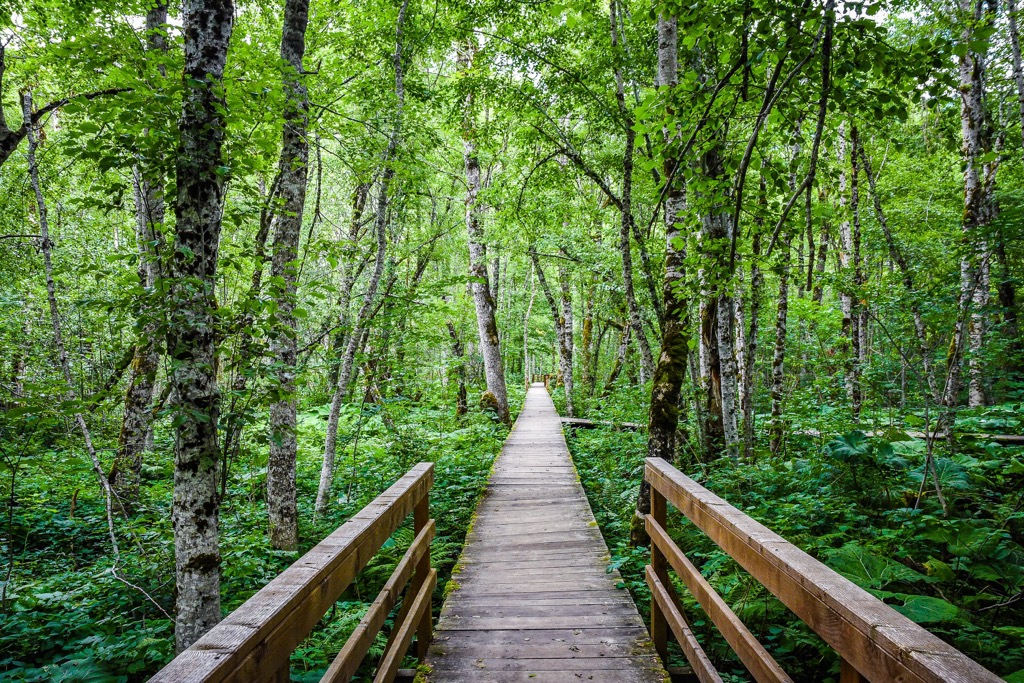
The rainforest’s natural and cultural values, as well as its landscapes, make it a candidate for inclusion in UNESCO’s World Natural Heritage and international ecological programs such as Man and the Biosphere.
The cultural heritage of Biogradska Gora National Park relies upon archaeological sites, sacred monuments, and folk architecture. In the small local villages, you will see katuns, log cabins, towers, and mills. Most of them lie around the perimeter of the Bjelasica mountain and park.
Pešica Rupe, Vranjak, Siska, and Vragodo are some of the most beautiful villages in this area. In the summertime, the hillsides are alive with flowers and livestock. They will be accompanied by folk architecture and local culinary expertise.
In the seventeenth century, the Ottoman army set up its fort near Lake Biograd. The fort was established with the goal of travelers having to pass it on their way to both Podgorica and Bijelo Polje. There is a legend about Biogradska Gora National Park, and its lake. In ancient times, there used to be fertile fields cultivated by two brothers lying below Biograd Lake.
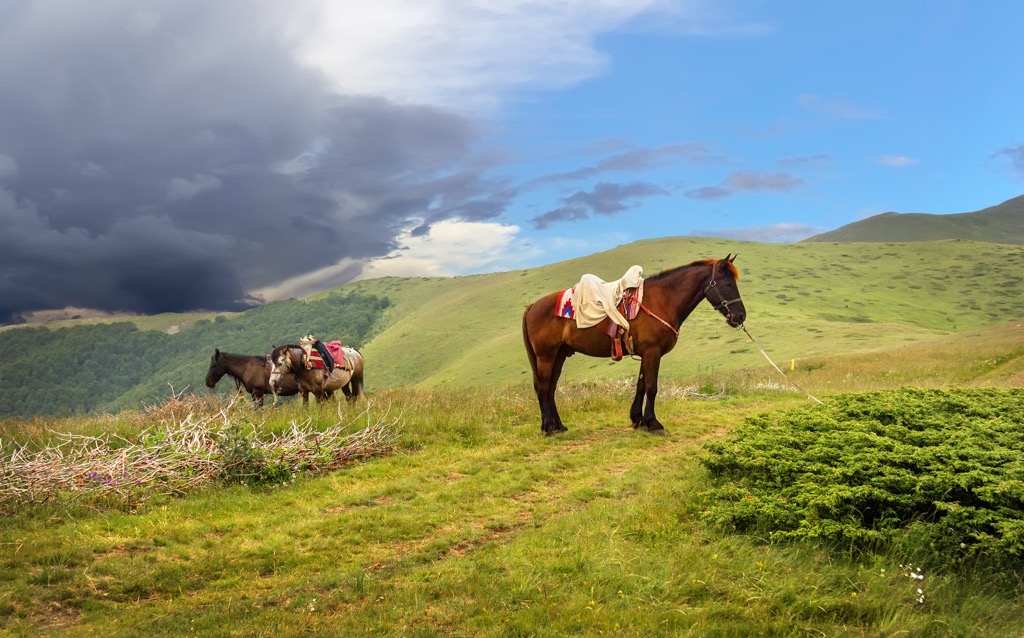
The grain that the brothers would harvest was shared equally by them in agreement. However, one fall night, when the brothers disagreed over this grain distribution, they began to fight violently. In a fit of rage, the younger brother kills the older one.
Their mother, overcome with pain, curses her youngest son. The force of her curse breaks the ground where they cultivated their fields. The ground then filled up with water and Biograd Lake appeared. Today's Lake comes from this incident, according to legend.
Regarding national legends, a critical character in Montenegrin history played a role in the preservation of this park. Nikola I Petrović-Njegoš, the King of Montenegro, successfully purchased Biogradsko Lake and its surroundings from the locals and then protected it.
Two theories are floating around, explaining how this came to be: According to one, residents of Rovčani and Moračani villages agreed to give their estates around the lake to Prince Nikola. He later declared to proclaim it a protected area. Another story suggests that the tribal leaders did not willingly give over their land but were persuaded by the prince, who was delighted by how beautiful it was.
Regardless of the truth, the Montenegrin ruler had an ecological vision and wisely decided which resources should be protected and preserved. His decision preserved the local forests so we can see them even today.
In the same year that he became the legal owner of the land, Prince Nicola protected Biogradska Gora by law. Even then, he already noticed its priceless value. This happened only six years after declaring the first national park in the world, Yellowstone National Park in the United States of America.
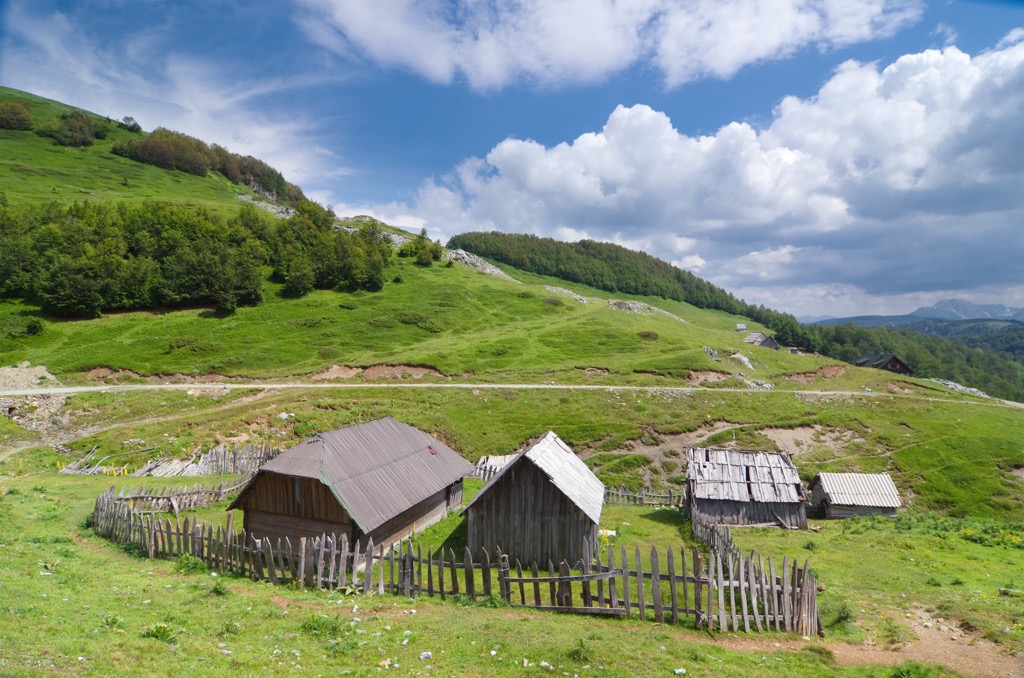
Three other areas in the vicinity of Nikšić received the same status. King Nikola banned the cutting of trees in this area, making sure one of Europe's last rainforests will be preserved. This forest ban was called "Prince's ban" or "Prince's woods."
Biogradska Gora is Montenegro's oldest National Park. The ban on logging started the protection of the area in 1878. In fact, local tribes gifted the area of Kolašin and Biograd to the state when they could not keep it as private property. This happened to Montenegro after joining a recently formed Kingdom of Yugoslavia.
Therefore, Montenegro is one of the first states in Europe to protect its environment and natural resources. This makes it both a historical event and an example of environmentally friendly behavior. In 1918, the National Assembly of the Kingdom of Yugoslavia confiscated the Petrovic dynasty's property, including Biogradska Gora National Park.
The area was briefly a National Park in 1935. However, it wasn't recognized officially as such until 1952. This means Biogradska Gora became a National Park in 1952, and it's been well-preserved ever since. Famous people such as Josip Broz Tito and Harrison Ford have enjoyed the serenity of the place on occasion.
In fact, not a single tree or larger plant has been cut down to make room for tourist infrastructure. Instead, the local infrastructure respects nature here. That is unlike numerous other national and natural parks in the Balkan Peninsula.
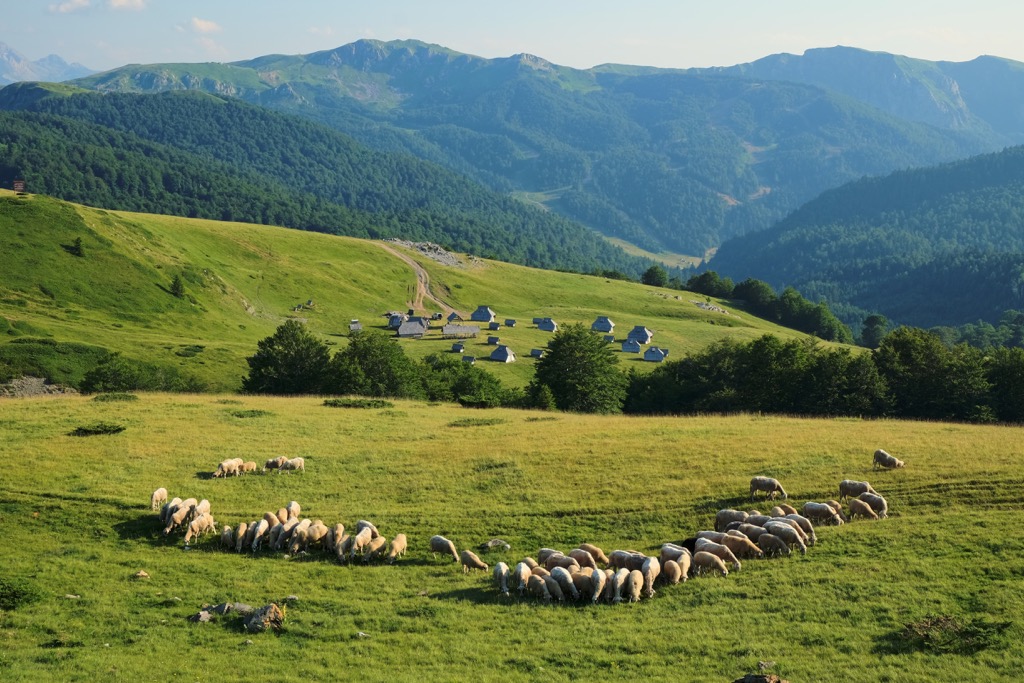
Make sure not to miss these hikes in Biogradska Gora National Park:
Hiking has always been one of the best ways to experience the scenery of Biogradska Gora National Park. Depending on the difficulty level, there are shorter or longer trails that lead to mountain peaks or glacier lakes here.
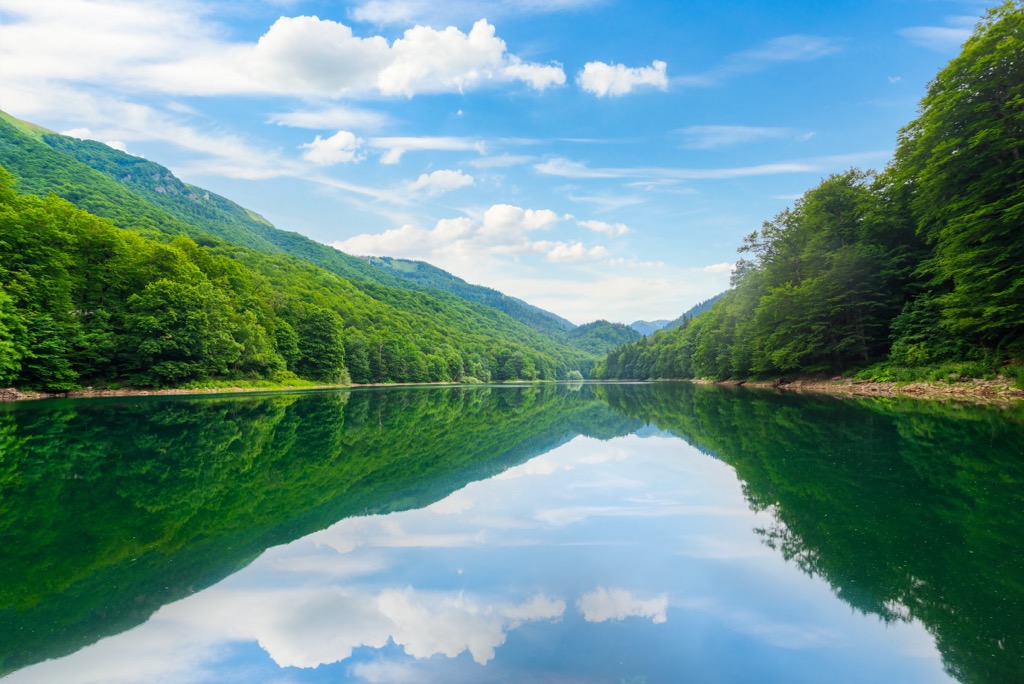
Biograd Lake is the largest and most accessible of the six glacier lakes in the park, and there’s an easy 3.5 km (2 mi) walk around it. This hike offers plenty of photo opportunities with numerous signposts to help point you in the right direction. Along the way, you'll find information about different aspects of the park, as well as the plants and animals living here.
Bjelasica is different from other mountains in the region. The rocks are of volcanic origin, so during the summer, the mountain is green, and during the winter, it's white. The most interesting river, or Biograd River, flows by Bjelasica mountain and fills Biograd Lake.
Nowhere in Montenegro will you find more fairytale lakes and streams than when hiking to the highest peak of Bjelasica – Zekova Glava. Standing at 2,122 m (6,961 ft) and a trip length of 11 km (6.8 mi), this mountain offers more than just its beautiful scenery.
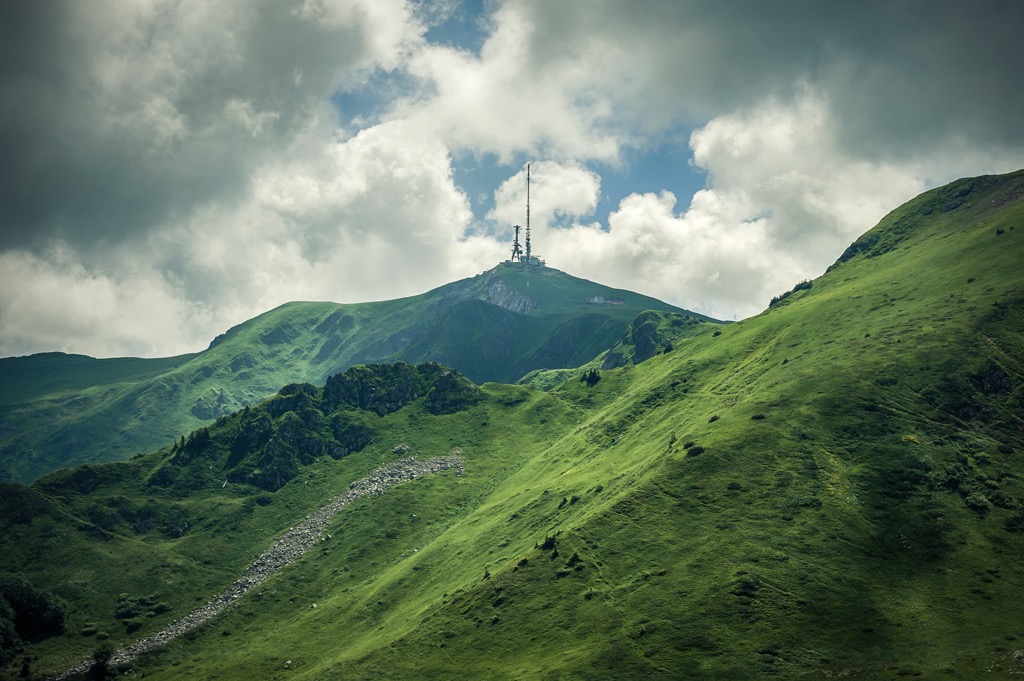
The Bjelojevića River is worth a visit. The most popular attraction here is Troglava peak and numerous glacial lakes along the way. The hike follows the river and is shaded, perfect for summer.
It is a 35 km (21 mi) long river hike that crosses several villages and peaks. Most importantly, it follows the river. This is a whole day hike.
The lakes have intense emerald blue water and a forest around them. Some things never change when it comes to this place, making it easier for us to understand what captured the admiration of King Nikola.
Next up are the most notable cities near Biogradska Gora National Park:
Kolašin is a town in Montenegro, and it lies on the Morača River. It is one of the most beautiful towns in the country, and it is a popular tourist destination.
This town was established in 1484 by King Stefan Tomašević. Kolašin was one of the first towns to be liberated from Ottoman rule during the First Serbian Uprising in 1804.
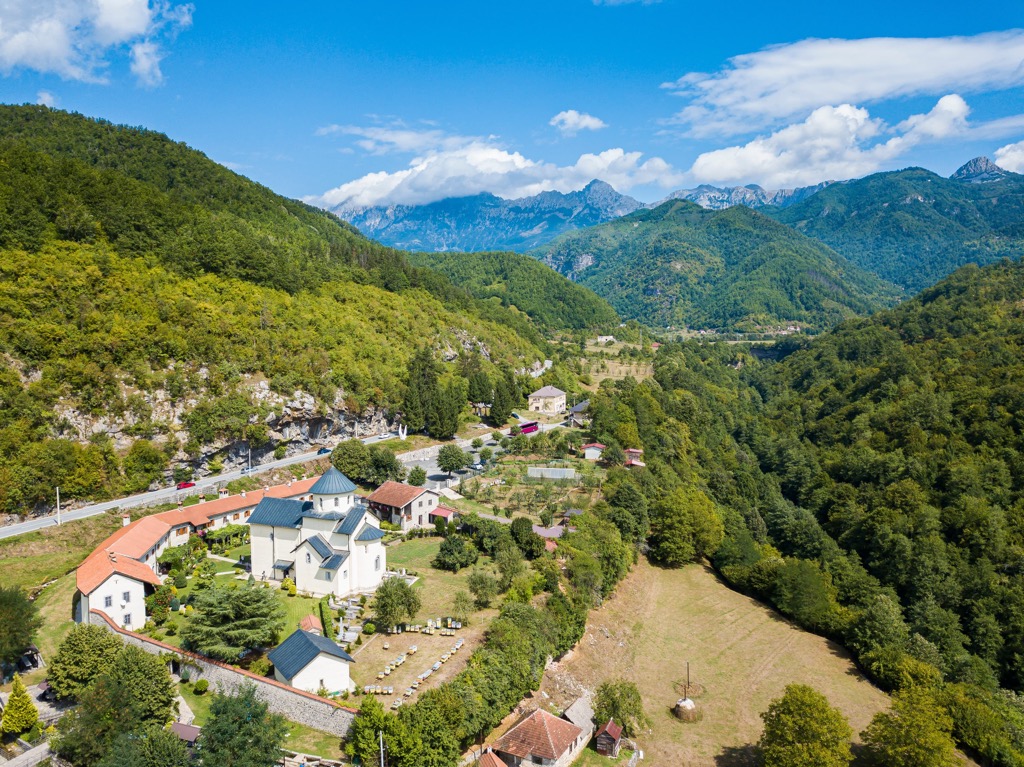
The main industries here are wood processing, food production, and traditional crafts such as pottery and weaving. You can reach Kolašin via road and rail and stay here in campsites and huts.
Podgorica is the capital and largest city of Montenegro. It is also the economic, cultural, academic, and sporting center of the country. Podgorica lies in a fertile valley near the foot of Lovćen massif.
Podgorica is the economic center of Montenegro and has a population of around 230,000 people. It has a lot to offer to tourists and locals alike, such as museums, theaters, parks, cafés, and restaurants.
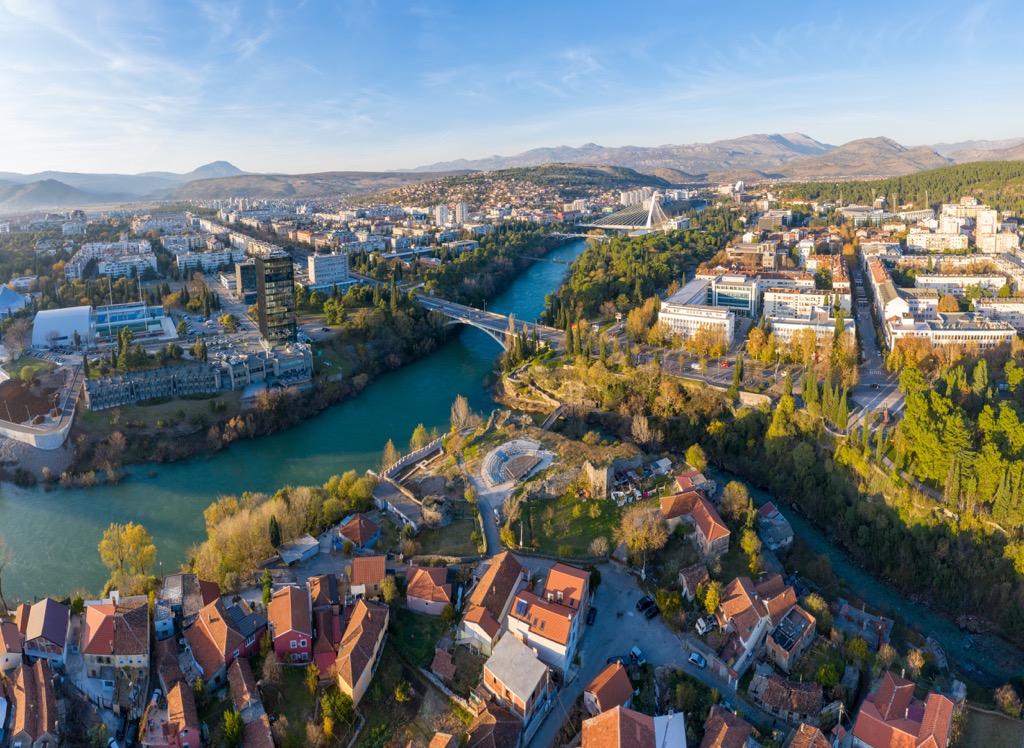
Podgorica is also home to many historical sites that features many buildings from different periods of the country’s history. One can reach it via road, air, and rail, and can stay here in all types of accommodations.
Nikšić is a city in Montenegro. It is the second-largest city in the country. The city has many attractions like monasteries, churches, and fortresses. You can reach Nikšić via road and rail and stay here in numerous hotels and apartments.
Nikšić is one of the oldest towns in Montenegro, and its economy is based on tourism, industry, and agriculture. Nikšić has a population of around 56,000 people, and it offers many fun things for tourists to explore.
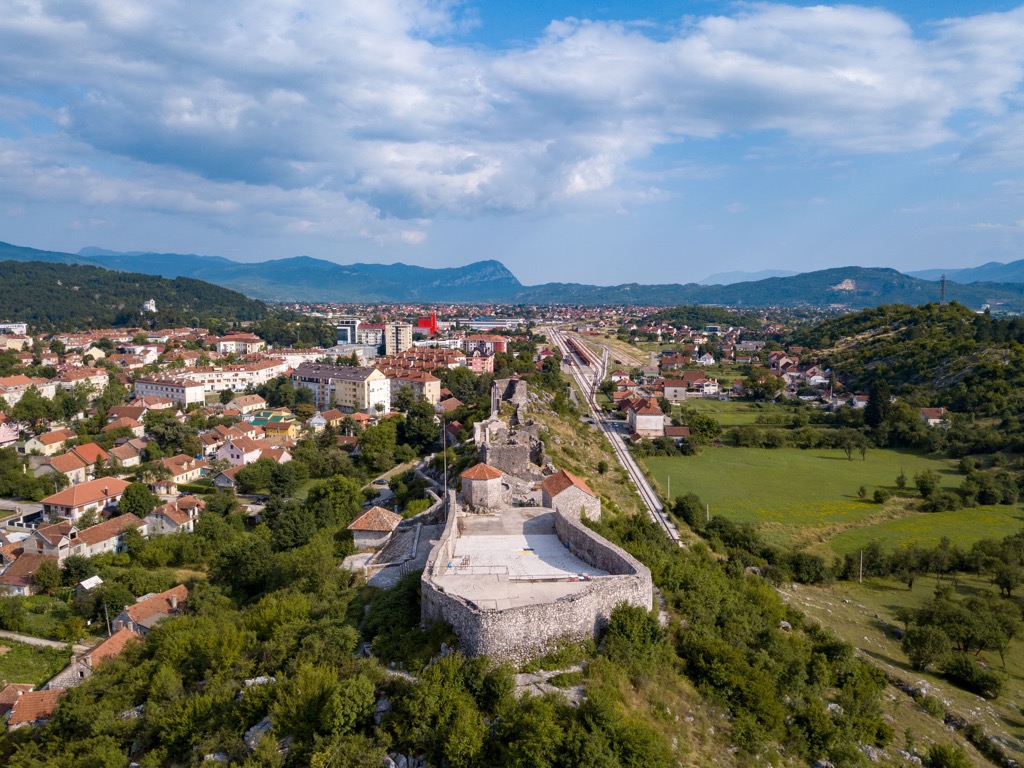
Explore Biogradska Gora National Park with the PeakVisor 3D Map and identify its summits.








